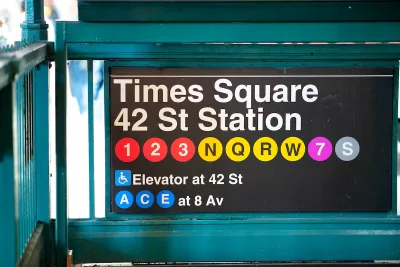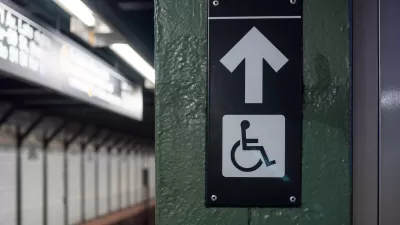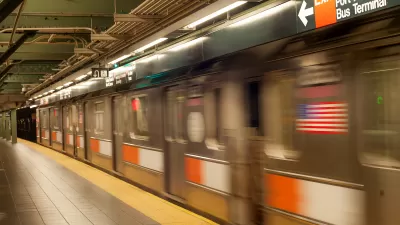The city is lagging on meeting its pledge to improve accessibility across the system.

A report from New York City’s Public Advocate reveals that “New York City’s public transit system is falling far behind other major cities both on timeline and technology needed to be truly, fully accessible,” according to a BK Reader article.
The report finds that under one-third of subway stations are accessible via elevator, with elevator outages common. “The MTA has invested significantly in aesthetic improvements that make stations less accessible, such as by removing benches and replacing them with leaning benches or that are underutilized for accessibility purposes, like using new LED screens to display advertisements instead of closed captioning for announcements.”
At the current rate of improvements, the report adds, New York City’s subway won’t be fully accessible until 2100. The report recommends immediate actions that include: implement efforts started by a 2019 pilot program, “Improve train boarding so that doors align properly with designated boarding areas, and raised infrastructure closes any large gaps between the train and platform,” and “Install wayfinding infrastructure including tactile guideways and boarding areas.” The report also provides near-term and long-term recommendations for making the city’s transit system truly fully accessible.
FULL STORY: MTA Failing to Meet Needs of NYC's Disabled on Public Transit: Report

Trump Administration Could Effectively End Housing Voucher Program
Federal officials are eyeing major cuts to the Section 8 program that helps millions of low-income households pay rent.

Planetizen Federal Action Tracker
A weekly monitor of how Trump’s orders and actions are impacting planners and planning in America.

Ken Jennings Launches Transit Web Series
The Jeopardy champ wants you to ride public transit.

Rebuilding Smarter: How LA County Is Guiding Fire-Ravaged Communities Toward Resilience
Los Angeles County is leading a coordinated effort to help fire-impacted communities rebuild with resilience by providing recovery resources, promoting fire-wise design, and aligning reconstruction with broader sustainability and climate goals.

When Borders Blur: Regional Collaboration in Action
As regional challenges outgrow city boundaries, “When Borders Blur” explores how cross-jurisdictional collaboration can drive smarter, more resilient urban planning, sharing real-world lessons from thriving partnerships across North America.

Philadelphia Is Expanding its Network of Roundabouts
Roundabouts are widely shown to decrease traffic speed, reduce congestion, and improve efficiency.
Urban Design for Planners 1: Software Tools
This six-course series explores essential urban design concepts using open source software and equips planners with the tools they need to participate fully in the urban design process.
Planning for Universal Design
Learn the tools for implementing Universal Design in planning regulations.
Ada County Highway District
Clanton & Associates, Inc.
Jessamine County Fiscal Court
Institute for Housing and Urban Development Studies (IHS)
City of Grandview
Harvard GSD Executive Education
Toledo-Lucas County Plan Commissions
Salt Lake City
NYU Wagner Graduate School of Public Service




























